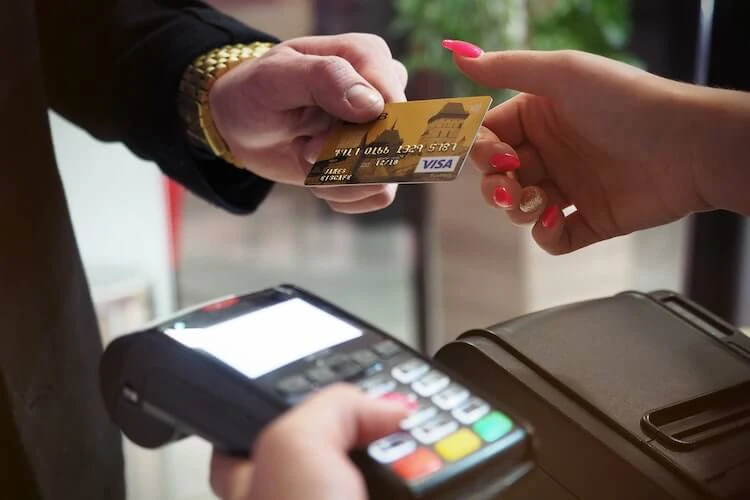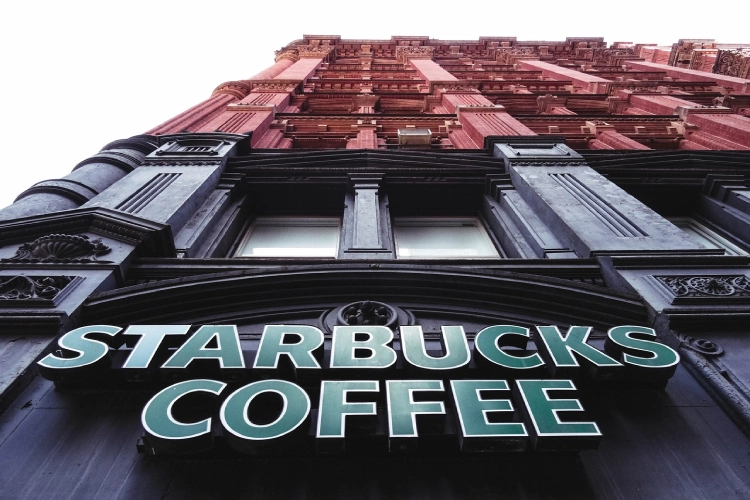More than 60% of the purchases made in 2019 were made using cards from Visa, a company that has long dominated the payment card industry.
As payment cards become more essential in our daily lives, Visa has quickly grown to become one of the most valuable companies in America. As of October 2021, Visa was valued at over $480 billion and reported net revenue of 21.8 billion for 2020. A good way to think about Visa’s revenue stream is for every $100 spent on a Visa card anywhere in the world, they make about a quarter of that, meaning 25 cents, an actual quarter, every time you buy a pair of shoes. That’s $100, they get 25 cents of that. As the network has scaled, that’s very high incremental margins, and so the profitability of the business naturally goes up. But Visa’s success hasn’t always been great news for merchants who have no choice but to rely on them for payment.
How does Visa make money and dominates the payment card industry
The Bank of America launched Visa as the nation’s first licensed credit card for middle-class consumers and small to medium-sized merchants in 1958. Today, the computer is changing our world the way we do business. By 1970, Bank of America gave up its direct control over the card, passing the control to a group of issuer banks Afterward, the company experienced rapid growth and by 1974 had extended its operations to other countries. In 1975, it also launched its inaugural debit card. that continue to manage, promote, and develop the new network in the United States. The company grew quickly after, expanding internationally by 1974 and introducing its first debit card in 1975. Every month, British shoppers signed for one and a half billion pounds’ worth of goods on a credit card.
In 2007, Visa completed its corporate restructuring with the formation of Visa Inc, and went public in 2008, raising $17.9 billion in one of the largest US public offerings to date.
Visa was set up to be dominant. They started actually as an association of thousands of banks across the country. So, all these banks came together and established Visa to have this national credit card. But of course, they had a dominant position because it was virtually all the banks and there are still Class B shares of Visa’s stock, which are actually owned still by those original banks. Today, Visa has grown to become one of the world’s largest payment processing networks, saying it has over 3.4 billion cards in the market across over 200 countries and territories.
Visa generated over $4 trillion in purchase volume in the United States, according to the February 2021 Nelson report. In comparison, MasterCard has over 2.3 billion cards in the market with a purchase volume of roughly 1.7 trillion.
It is undeniable that Visa has a greater quantity of cards in circulation than MasterCard. Discover cards are a little bit anomalous; they have more cards than they have transactions. But Visa cards, in both credit and debit, are the most frequent ones, and Visa dominates the transaction counts in both markets.
Since going public, Visa has rarely had a decline in revenue, and its shares have continued to outperform the S&P 500, excluding just three years. In one of those years, 2020, Visa still reported net revenue of $21.8 billion, with operating expenses at 7.8 billion. Its total net income for the fiscal year came to roughly 10.7 billion. Their profit margins are huge. The numbers I’ve seen over time, but then, 30-40% profit margins, where to give you a sense in the retail industry, profit margins tend to be in the 2%, 3%, 4% range.
So as a business, the reason it’s so profitable is because it’s a primarily fixed cost business. Once you’ve got that infrastructure all in place, each incremental transaction that’s flowing through that ecosystem comes in at extremely high incremental margins because it’s just this massive capacity network.
How Visa makes money
So how exactly does Visa make money? Contrary to popular belief, Visa doesn’t make any profit from credit card interest fees. Instead, those fees are charged by the card issuer. In most cases, banks allow Visa to face none of the risks that come with lending money.
So Visa does not have direct relationships with individual consumers. The banks issue the cards, and so you may get your card, or I may get my card. But while many people think of those as Visa cards, they’re really not. They’re the bank’s cards that happen to have Visa on them and Visa is the network on those cards. Visa’s business model relies heavily on what is known as the four-party model. When you use a Visa card to make a purchase, there are usually four entities that come into play:
- You
- The customer making the purchase
- The bank that holds the customer’s money
- The merchant selling the product
Visa works as a middleman connecting all three of those entities together.
They’re a physical network, not dissimilar from a Telecom network or an internet-style network. Visa’s network carries money. It’s a different type of physical network that connects about 18,000 banks and other types of financial institutions globally. And every time that you use a card, a series of messages have to run back and forth between the cash register or the website or wherever you’re making a purchase, going back to your bank that issued you that card to see whether you are who you said you are and whether you have the money to do an authorization and then also to go back and kind of clear and settle the transaction, meaning actually move the money from your bank’s bank account over into the merchant’s bank account.
A majority of Visa’s gross revenue, about 39%, comes from data processing fees that are required to complete this practice. Roughly 34% consists of service revenues, a fee that Visa charges card issuers like banks for working with Visa branded payment methods.
They charge a set of fees associated with that kind of brand network that creates the trust in the ecosystem, the trust that enables it so that you can just walk into any merchant anywhere in the world and hand them a piece of plastic. But if it says Visa on it, and the merchant takes Visa, then the transaction works.
International transaction revenues take up about 22% of the company’s gross revenue. Beyond the three main sources of revenue, Visa has also been continuously investing in other types of payment that could bring more sources of revenue for the company in the near future. This is like B2B payments, business-to-business payments. Like disbursements. That’s when a business pays, think like an Uber driver or Lyft driver or an insurance payout, things like that. There’s a lot of person-to-person payments to people, to individuals exchanging money. If you’re really taking a long-term view of Visa like 5, 10, 20 years, increasingly other forms of payment are going to be an increasing part of their business.
Visa’s success in the payment processing industry has also led to a series of legal cases and investigations over the years. The Department of Justice has sued Visa multiple times, has entered into consent decrees over everything from Visa used to have rules that said any bank that issued their cards could not issue any cards from Discover or American Express, and that was found to be an antitrust problem. Visa had rules tying together credit cards and debit cards so that merchants, if you wanted to accept a credit card, had to accept a debit card, and vice versa. Almost, it’s hard to think of other industries that have had more antitrust litigation than this one. In December 2019, Visa and MasterCard agreed to pay $5.5 billion to settle against merchants who had accused them of charging excessive fees. The largest ever class action settlement of an antitrust case, according to the co-lead counsel of the case, Berger Montague. Visa also notably abandoned its $5.3 billion takeover of Plaid. In August 2021, a federal judge certified a class action lawsuit accusing Visa and MasterCard of charging excessive ATM fees to consumers and operators. Visa declined to comment on the matter. In the meantime, small business owners contend that the fees charged by Visa for swiping are exorbitant, leading to challenges in their survival.
I don’t think the average consumer thinks about swipe fees when they’re using their credit or debit card. Business owners certainly do. In 2009, swipe fees collected by Visa and MasterCard sat at $25.6 billion. A decade later, it more than doubled to $67.6 billion. In processing fees paid by us merchants to accept all card payments, totaled $110 billion in 2020. It tends to be somewhere in the range of 10% of what merchants pay on a transaction.
Meanwhile, those in support argue that Visa stands on the side of merchants, rather than the banks. The Visa’s business structure is very balanced, and if anything is actually skewed, believe it or not, toward the merchants. They actually get the majority of their revenue from the banks and the ecosystem that’s supporting the merchants. So, they really are pretty agnostic in the ecosystem, like they are there to serve as this central party that facilitates effective digital payments, kind of balancing both sides.
The Changed world of Ecommerce
Visa, at some level, is a victim of their own success in the sense that they’re so ubiquitous, secure, and easy to use that people begin to take it for granted. For the consumer, it’s fantastic, just an enabler of their life. Imagine if you didn’t have it, and you literally had to pay for everything either with cash or a check, what your life would be like. On the merchant side, though, the same thing is true. I mean, cash is expensive for merchants. They have to have cash drawers, armored trucks, and managerial level people that count the cash and make sure that there’s no theft at the end of every shift. There’s always, of course, debate and griping about the kind of cost of taking card payments. The reality is that the alternatives are also extremely expensive. And it’s very quick and easy, especially with contactless payments nowadays where you can just tap it and go. It speeds up your checkout lines and facilitates the whole world of commerce.

 Take Control Of Your Finances
Take Control Of Your Finances